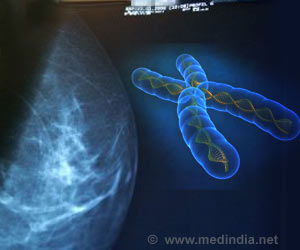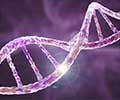Specific mutations such as tandem duplications capable of generating ‘driver’ mutations that ultimately lead to breast cancer, uncovered.
- Cancer is caused by a series of genetic changes or ‘driver’ mutations that convert normal cells to cancer cells.
- These driver mutations in turn might be triggered by ‘passenger’ mutations thought to be incidental occurrences.
- Targeting passenger mutations could pave the way for a novel therapeutic approach to treat breast cancer.
Aim of the Study
The researcher team conducting the study specifically looked at numerous ‘passenger’ mutations that occur in cancer cells to determine if they were indeed benign and incidental findings in cancer cells or whether they played an active part in breast cancer development.The study team assessed 560 breast cancer genomes from all parts of the world including USA, Europe and Asia. They looked for areas where specific genetic changes or mutations referred to as tandem duplications occurred.
A tandem duplication is said to happen when a small segment of the DNA is copied and attached into a neighboring part of the DNA creating multiple copies of that DNA segment in the genome.
Findings of the Study
- It was found that there were at least 33 locations in the breast cancer genome where these tandem duplications occurred frequently, in many different women.
- Surprisingly, many of these tandem duplications were found to occur in critical areas of the breast cancer genome. These included genes that are already known to be associated with breast cancer and in areas of the genome that ‘turn on’ multiple genes. These regulatory areas are termed ‘super enhancers’. Damage to the regulatory areas would naturally cause uncontrolled activation of several genes.
These findings led the scientists to believe that these tandem duplications might not be actually benign in nature but might actually trigger further genetic changes, thus initiating a cascade of ‘driver’ mutations ultimately culminating in breast cancer development.
According to Dominik Glodzik, first author on the paper from the Wellcome Trust Sanger Institute, "DNA in breast cancers is heavily restructured by many tandem duplications. We were curious whether this mutational signature influences how cancer develops. From our research, it now looks like some of these tandem duplications are not just unimportant passenger mutations, but actually create new driver mutations for cancer."
The authors of the study also assessed other cancers such as ovarian and pancreatic cancers to determine the occurrence and nature of tandem duplications.
Not surprisingly, they found tandem duplications in these cancers too but in different areas of the genome than breast cancer. This is explained by the fact that different genes are activated in various tissues. More research is needed to get further information and knowledge on ovarian and pancreatic cancers.
In the words of Dr Serena Nik Zainal, lead author from the Sanger Institute, "This research has shown a new genetic mechanism for generating drivers in cancer, which we have found not only in breast cancers, but also other cancers. It is really important to identify and study tumors with this mutational signature of tandem duplications, because if it can create many new drivers, then it has potentially devastating consequences making tumors more aggressive.
"This is a mutational signature that should be a target for therapeutic intervention. Further study is needed to understand this mechanism, and for finding out whether tumors with tandem duplications at these hotspots could respond to certain treatments better than others."
Reference
- Dominik Glodzik, Sandro Morganella, Helen Davies, Peter T Simpson, Yilong Li, Xueqing Zou, Javier Diez-Perez, Johan Staaf, Ludmil B Alexandrov, Marcel Smid, Arie B Brinkman, Inga Hansine Rye, Hege Russnes, Keiran Raine, Colin A Purdie, Sunil R Lakhani, Alastair M Thompson, Ewan Birney, Hendrik G Stunnenberg, Marc J van de Vijver, John W M Martens, Anne-Lise Børresen-Dale, Andrea L Richardson, Gu Kong, Alain Viari. A somatic-mutational process recurrently duplicates germline susceptibility loci and tissue-specific super-enhancers in breast cancers. Nature Genetics (2017). doi:10.1038/ng.3771
















